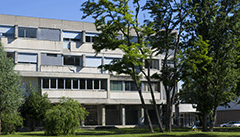
Sciences & Société
Soutenance de thèse : Muhammad Idham HABIBIE
Enhanced Grover's Algorithm Solutions for 5G Active User Detection
Doctorant : Muhammad Idham HABIBIE
Laboratoire INSA : CITI
Ecole doctorale : ED160 : EEA
5G includes features like Ultra-reliable low-latency communication (URLLC) and Massive Machine Type Communication (mMTC) to minimize delays and connect numerous devices. This necessitates an Active User Detection (AUD) scheme, requiring real-time detection by the Base Station (BS). Maximum Likelihood (ML) is the top performer for AUD but is complex. To simplify, alternatives like CCR and ZF have been introduced but cannot match ML's performance. To address this, we explore Grover's algorithm, known for its superposition abilities (working with 0 and 1 at the same time). However, Grover's algorithm, when constrained by the function f (x) = δ, does not perform as well as ML; it is more similar to CCR and ZF. To match ML's performance, Grover's algorithm needs modification to find the minimum distance, like ML does.
We propose a new algorithm, namely Improved Iterated Minimum Searching Algorithm (IIMSA), aimed at enhancing the existing Boyer-Brassard-Høyer-Tapp (BBHT) and Durr-Hoyer Algorithm (DHA), which are the promising method to find minimum using Grover's algorithm, to reduce their complexity while maintaining high performance. The idea is to use any random solution rather than carrying out random L iterations as suggested by DHA. We also incorporate classical methods such as ZF and CCR to enhance their performance and reduce the complexity. We also adapt Grover's algorithm in the context of AUD in this thesis.
We also introduce an Enhanced Grover's algorithm inspired by a quantum-hybrid solution that leverages both quantum and classical elements. The primary goal is to increase the success probability Ps and reduce complexity of the original Grover's algorithm. The concept involves using fewer Grover's iterations than the optimal number, denoted as Lopt, and combining it with classical success probability. We believe that this approach has the potential to alter the complexity behavior and achieve high success probability.
Información adicional
-
Amphi EST Bat. « Les Humanités » - INSA Lyon - Villeurbanne

